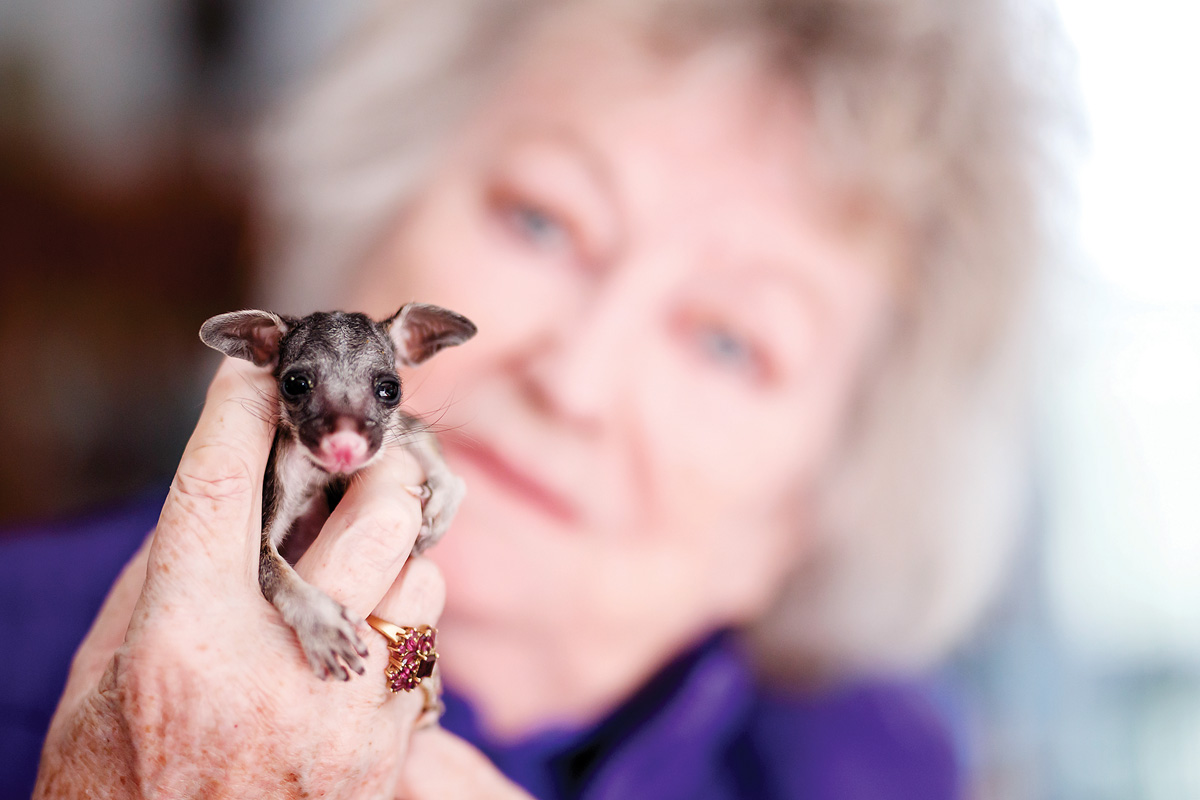AS people from Melbourne’s suburbs flock to the Mornington Peninsula, wildlife advocates say native animals are coming under increasing pressure from the urbanisation, tree clearing and domestic and feral predators.
Continued population growth in the region and the development of new homes and businesses is having an immediate impact on native animals, particularly tree-dwelling animals, including birds, gliders, koalas and possums.
Rye wildlife carer Brenda Marmion said she is taking in more injured and displaced native animals every year, as constant vegetation removal makes way for new buildings.
Older trees, which usually contain hollows used by birds and small animals, are becoming rarer to find on the peninsula as householders more towards low maintenance gardens and smaller yards.
“I see the direct result of this loss of habitat, and it’s devastating,” Ms Marmion said.
“Animals that used to rely on the trees suddenly find themselves with nowhere to go when that tree disappears, or they are forced to find accommodation wherever they can, and that often brings them into conflict with humans.
Ms Marmion said developers and residents were removing vegetation and trees at a massive rate.
While Mornington Peninsula Shire’s biodiversity conservation plan recognises vegetation as the primary threat to biodiversity on the peninsula, wildlife carers agree that vegetation removal continues largely unchecked.
Jenny Bryant from the Tyabb Koala Hospital said tree loss was the most significant factor in wildlife displacement on the peninsula.
In most instances a planning permit is needed for the removal of vegetation or trees, but other than paying a fee and filling out a form, it is a fairly easy process.
In the three weeks from 21 March to 12 April, there were 53 planning applications for the removal of vegetation across the peninsula, three relating to native vegetation and 12 for the removal of 47 trees.
“It’s ridiculous … I’ve been looking after wildlife on the peninsula for 40 years and I’ve been warning the shire about vegetation and tree removal the entire time, but nothing gets done,” Ms Bryant said.
“They just put it down to progress, but it’s not progress of we are losing something so important.”
A seminar on peninsula koala populations in 2020 led by Desley Whisson from Deakin University and Emily Hynes from Ecoplan Australia heard that maintaining current koala habitat, especially eucalypt trees, was essential to protect the peninsula’s declining koala populations.
The seminar heard that while there were efforts to increase the habitat for koalas and to link larger forest remnants through establishing biolinks, more needed to be done to reduce habitat loss.
But even with steps to reduce habitat loss Ms Marmion, who runs Crystal Ocean Wildlife Shelter, said other threats still existed, such as the increase in dogs and cats and the resulting devastating impact on wildlife.
She said residents concerned about feral cats in Rye had trapped more than 15 over the past year, with none of them microchipped and all presenting with aggressive, feral behaviour.
“It’s tragic that these poor cats are the result of irresponsible owners or people who don’t desex their animals, and they are left to suffer in the wild while our precious native animals become their food source,” Ms Marmion said.
“If it’s not cats and cars, it’s loss of habitat because people want to cut down trees. It’s just heartbreaking for wildlife.”
Under shire’s 24-hour curfew, it is illegal to allow cats to roam during the day or night, and fines can be issued to offenders.
Ms Marmion said placing nesting boxes high in trees could go some way to making up for the loss of birds and marsupial habitat.
Nesting boxes can be bought through Wildlife Victoria, and several men’s sheds around the peninsula.
First published in the Southern Peninsula News – 19 April 2022



